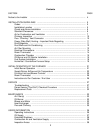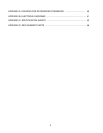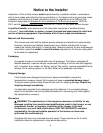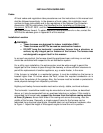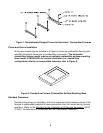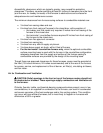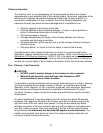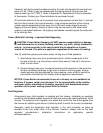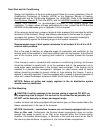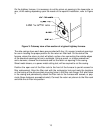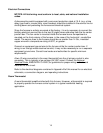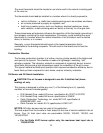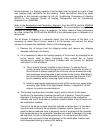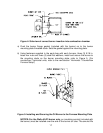
10
Chimney Inspection
The chimney, vent, or any passageway for the stack gases to flow to the outdoor
atmosphere is a very important part of the heating system. No furnace, regardless of the
efficiency of the design, can perform satisfactorily when the chimney to which it is
connected is inadequate or in poor condition. Any of the following symptoms may
indicate a chimney has severe structural damage and is unsuitable for use.
• Chimney appears to be leaning to the side.
• Chimney appears to have structural damage, i.e. loose or missing blocks or
bricks, or excessive deterioration at mortar joints.
• Tile liner damaged or missing.
• Flue gas leakage along the length of the chimney between the chimney
connector and discharge termination.
• Excessive corrosion at the cleanout port or at the chimney connector entrance
into the chimney.
• Structural debris, i.e. mortar or tile liner flakes, in base of the flue way.
A qualified person shall inspect the chimney to confirm it is correctly sized for the
application, properly constructed, and in sound condition. Refer to the Standard for the
Installation of Oil-Burning Equipment, NFPA 31-2001, for details on proper chimney
sizing and construction. If needed, the chimney should be cleaned before installing the
furnace. Any accumulation of dirt or debris at the bottom of the flue should be removed.
Flue / Chimney / Vent Connector
c CAUTION:
• DO NOT install a manual damper in the chimney or vent connector.
• Motorized and thermally- activated type vent dampers are NOT
recommended for use on these furnaces.
It is desirable to install the shortest vent connector (also referred to as a flue or chimney
connector) possible with the fewest number of fittings, i.e. transitions and elbows.
Generally, 6-inch diameter, 24 Ga. or heavier, single wall, lock seam-type, galvanized
steel vent pipe and fittings are satisfactory materials for the fabrication of a vent
connector. However, always consult local codes and authorities for specific minimum
requirements.
For some installations, it may be prudent to turn the furnace flue elbow 90 degrees
clockwise, with respect to the front of the furnace, such that the elbow is open to the
right-hand side of the unit, rather than upward. Turning the flue elbow may better
facilitate connection of the vent connector piping to the flue elbow on the highboy and
front flue, lowboy furnaces. Due to the presence of the fan and limit control and the
wiring harness, the elbow may not be rotated 90 degrees counterclockwise. The
installer must carefully mark and cut a hole in the furnace housing to allow the vent
connector to pass through the housing.



